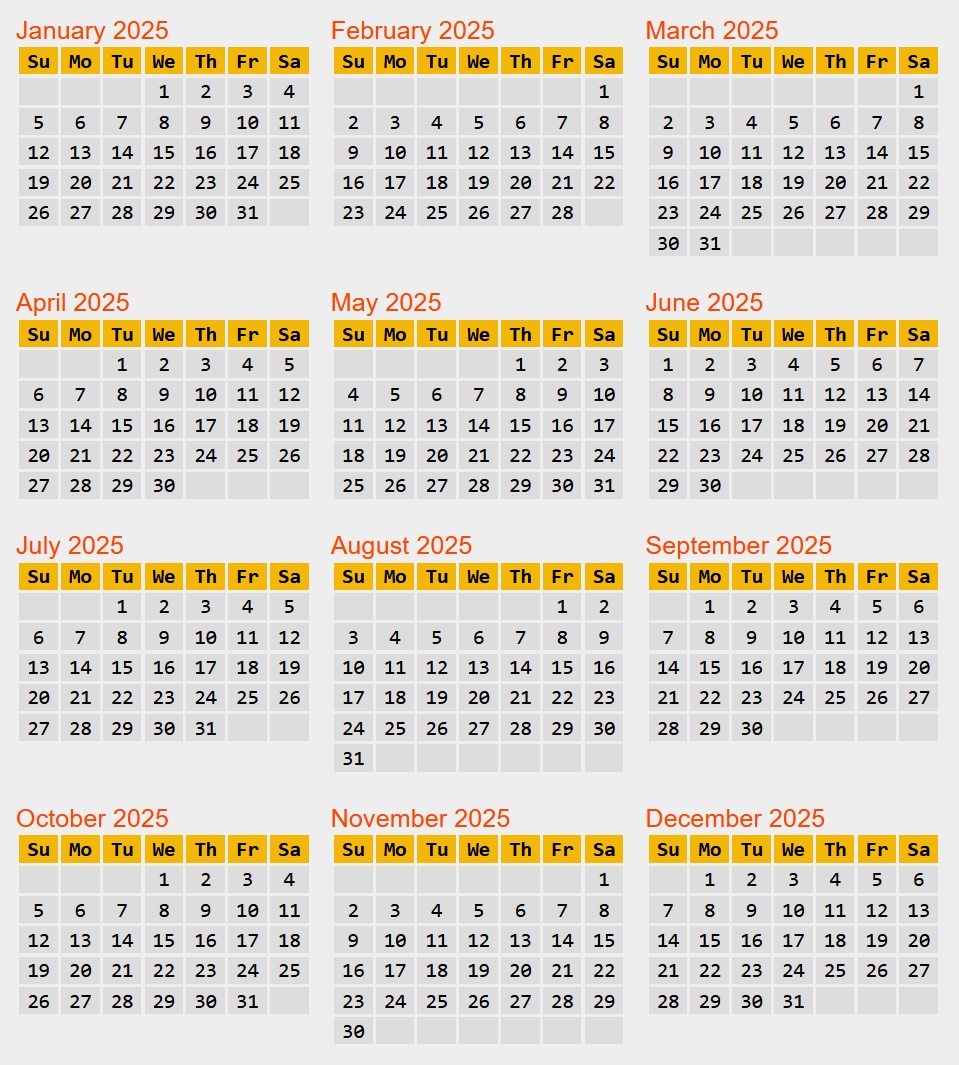Some questions
You have most likely asked questions containing the words 'this year'. Such questions can be like
- When do the schools start this year?
- On what day of week is the New Year Day this year?
- How our wedding day occurs this year?
- When will we have the annual meeting this year?
If you have been annoyed to find answers to questions like these, this article might be something to read further.
The calendar that we are using makes almonst all people to find answers to questions with 'this year'. If we had a slightly different calendar, most of those questions would be superfluous.
Our current calendar
The western calendar that we are commonly using is officially called Gregorian Calendar as its development was initiated by Pope Gregory XIII. The Gregorian Calendar was taken into use in Roman-Catholic countries in 1582. During the following centuries it was accepted in most countries of the western world.
The Gregorian Calendar is a modification of Julian Calendar which was developed during the days of Julius Caesar, the leader of the Roman Empire.
The following are the essential features of Gregorian Calendar.
- Time is calculated in years, months, and days. A year corresponds to the time that passes when the Earth circulates the Sun. A day is the time when the Earth rotates once around its own axis. A month resembles the time that the Moon needs to go around the Earth.
- Every year consists of 12 months that are 28, 29, 30, or 31 days long.
- Common years have 365 days.
- Years that are equally divisible by four are leap years which have 366 days. There are some exceptions to this basic rule, but all years divisible by four in the range 2004 ... 2096 are leap years.
- The extra day that exists in leap years is needed because the circulation time of the Earth around the Sun is not exactly 365 days. The extra day is added to the month February.
- In addition to years, months, and days, time is measured as weeks in the Gregorian Calendar. A week consists of seven days. Weeks do not relate to any astronomical facts.
- The beginning of a week is not synchronized with the beginning
of a year. For this
reason, there are 14 different calendars in the Gregorian system:
- Non-Leap Year starting with Monday
- Non-Leap Year starting with Tuesday
- Non-Leap Year starting with Wednesday
- Non-Leap Year starting with Thursday
- Non-Leap Year starting with Friday
- Non-Leap Year starting with Saturday
- Non-Leap Year starting with Sunday
- Leap Year starting with Monday
- Leap Year starting with Tuesday
- Leap Year starting with Wednesday
- Leap Year starting with Thursday
- Leap Year starting with Friday
- Leap Year starting with Saturday
- Leap Year starting with Sunday
- As weeks run independently in relation to years in the Gregorian calendar, the 14 different calendars are taken into use rather randomly. This makes it difficult to plan annual activities with the Gregorian Calendar.
- There are differences how weeks are displayed in Gregorian Calendars. In the United States it is common to use weeks that start with Sundays. In Europe weeks usually start with Mondays. You can find American-style calendars in figures 1 and 2. Here you can explore more Gregorian Calendars.



